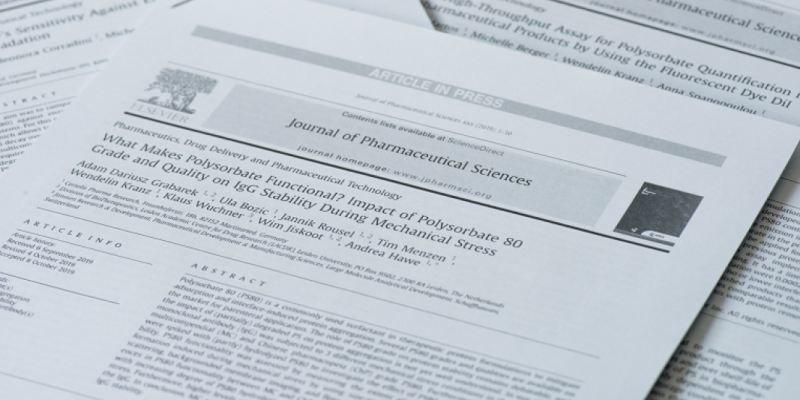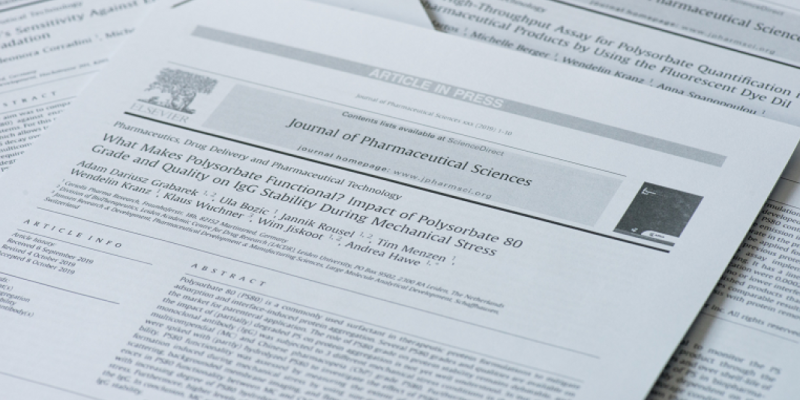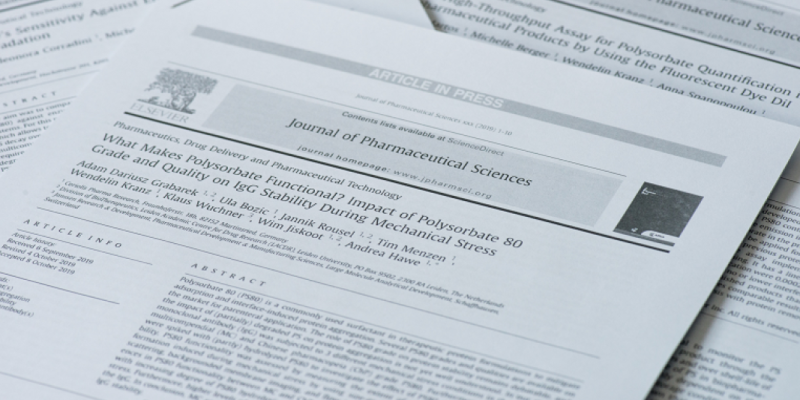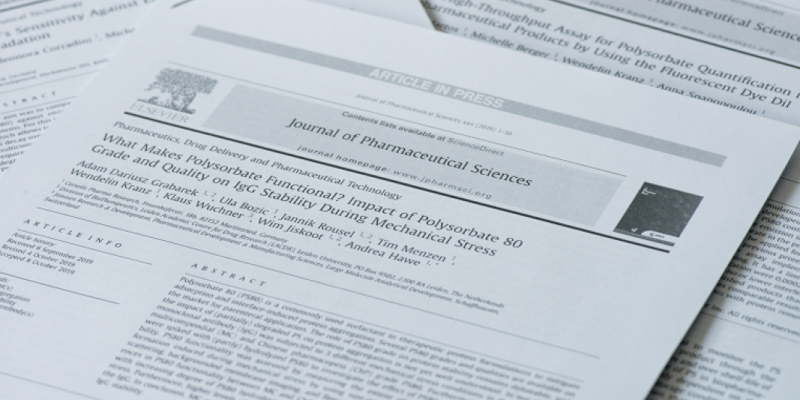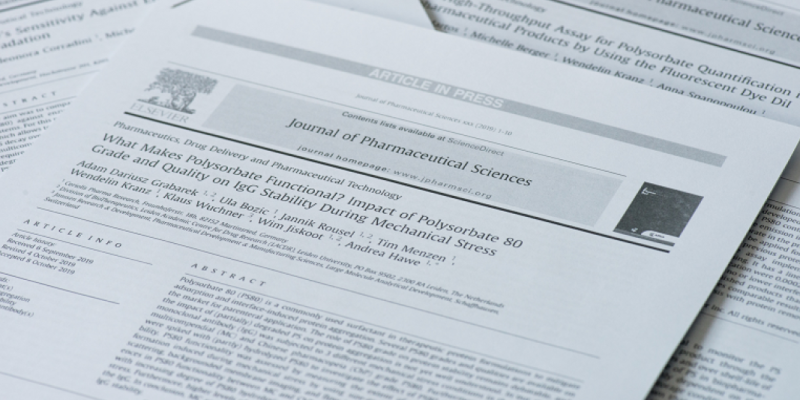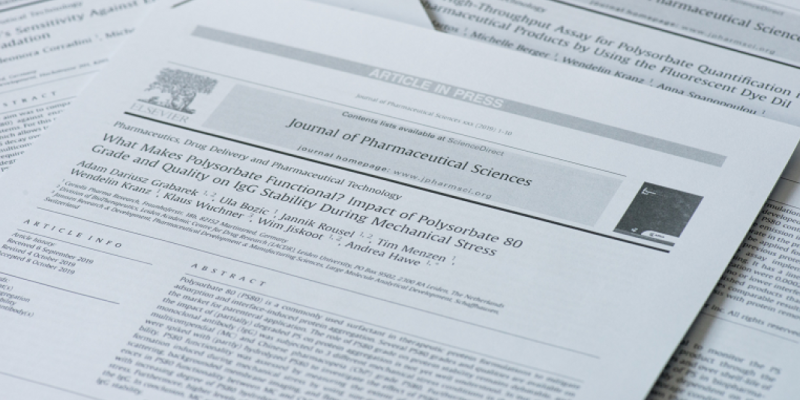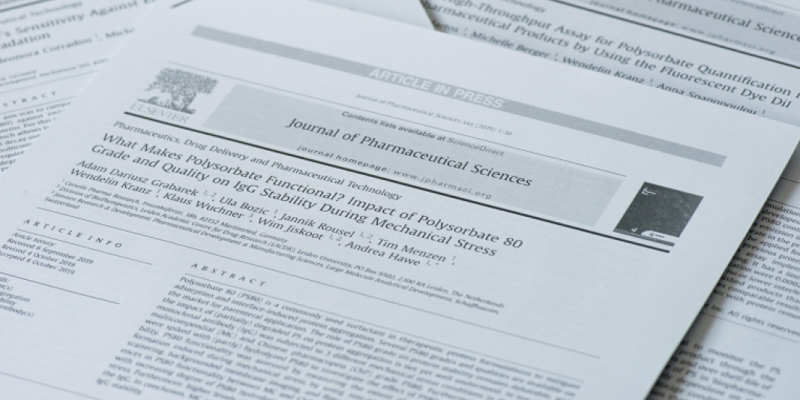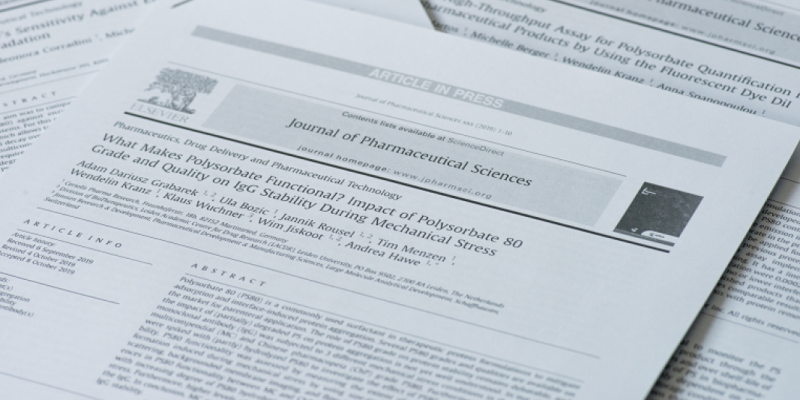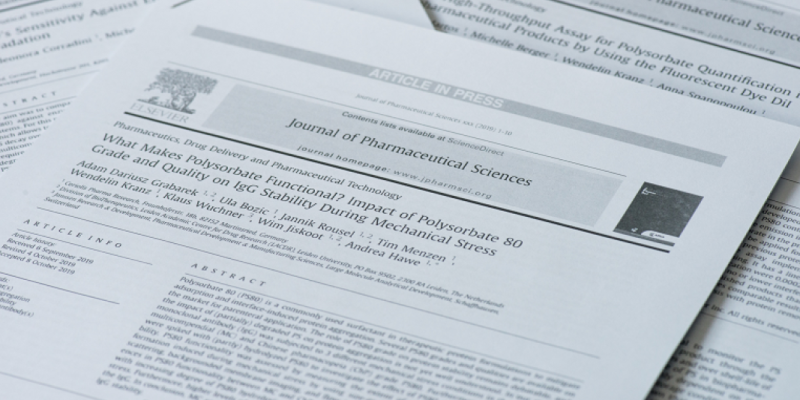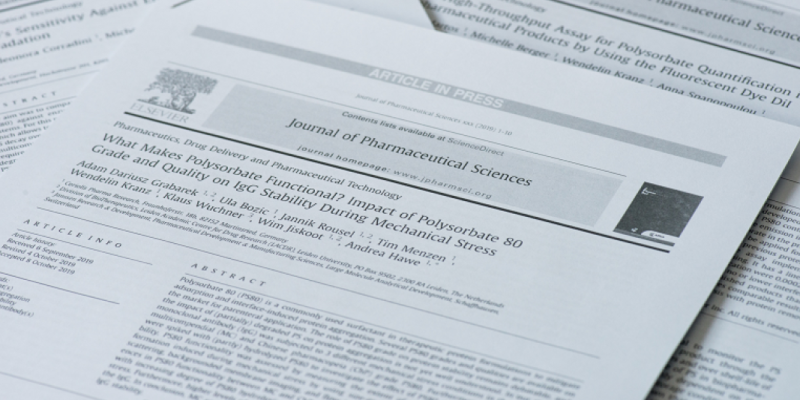Towards heat-stable oxytocin formulations: analysis of degradation kinetics and identification of degradation products.
Pharm Res. 2009 Jul
PURPOSE: To investigate degradation kinetics of oxytocin as a function of temperature and pH, and identify the degradation products.
MATERIALS AND METHODS: Accelerated degradation of oxytocin formulated at pH 2.0, 4.5, 7.0 and 9.0 was performed at 40, 55, 70 and 80 degrees C. Degradation rate constants were determined from RP-HPLC data. Formulations were characterized by HP-SEC, UV absorption and fluorescence spectroscopy. Degradation products were identified by ESI-MS/MS.
RESULTS: The loss of intact oxytocin in RP-HPLC was pH- and temperature-dependent and followed (pseudo) first order kinetics. Degradation was fastest at pH 9.0, followed by pH 7.0, pH 2.0 and pH 4.5. The Arrhenius equation proved suitable to describe the kinetics, with the highest activation energy (116.3 kJ/mol) being found for pH 4.5 formulations. At pH 2.0 deamidation of Gln(4), Asn(5), and Gly(9)-NH2, as well as combinations thereof were found. At pH 4.5, 7.0 and 9.0, the formation of tri- and tetrasulfide-containing oxytocin as well as different types of disulfide and dityrosine-linked dimers were found to occur. Beta-elimination and larger aggregates were also observed. At pH 9.0, mono-deamidation of Gln(4), Asn(5), and Gly(9)-NH2 additionally occurred.
CONCLUSIONS: Multiple degradation products of oxytocin have been identified unequivocally, including various deamidated species, intramolecular oligosulfides and covalent aggregates. The strongly pH dependent degradation can be described by the Arrhenius equation.
Pharm Res. 2009 Jul
https://link.springer.com/article/10.1007%2Fs11095-009-9878-2

